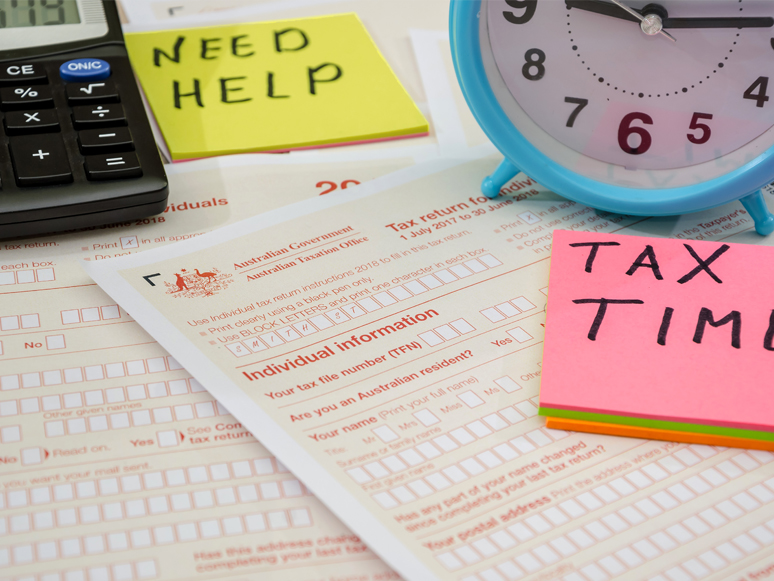logo


20th May, 2021

In the Budget, the Government did not announce any personal tax rates changes, having already brought forward the Stage 2 tax rates to 1 July 2020 in the October 2020 Budget. The Stage 3 tax changes will commence from 1 July 2024, as previously legislated.
The 2021–2022 tax rates and income thresholds for residents are therefore unchanged from 2020–2021:
Stage 3: from 2024–2025
The Stage 3 tax changes will commence from 1 July 2024, as previously legislated. From 1 July 2024, the 32.5% marginal tax rate will be cut to 30% for one big tax bracket between $45,000 and $200,000. This will more closely align the middle tax bracket of the personal income tax system with corporate tax rates. The 37% tax bracket will be entirely abolished at this time.
Therefore, from 1 July 2024, there will only be three personal income tax rates: 19%, 30% and 45%. From 1 July 2024, taxpayers earning between $45,000 and $200,000 will face a marginal tax rate of 30%. With these changes, around 94% of Australian taxpayers are projected to face a marginal tax rate of 30% or less.
Low and middle income tax offset
The Government also announced in the Budget that the low and middle income tax offset (LMITO) will continue to apply for the 2021–2022 income year. The LMITO was otherwise legislated to only apply until the end of the 2020–2021 income year, meaning low-to-middle income earners would have seen lower tax refunds in 2022.
The amount of the LMITO is $255 for taxpayers with a taxable income of $37,000 or less. Between $37,000 and $48,000, the value of LMITO increases at a rate of 7.5 cents per dollar to the maximum amount of $1,080. Taxpayers with taxable incomes from $48,000 to $90,000 are eligible for the maximum LMITO of $1,080. From $90,001 to $126,000, LMITO phases out at a rate of 3 cents per dollar.
Consistent with current arrangements, the LMITO will be received on assessment after individuals lodge their tax returns for the 2021–22 income year.
Low income tax offset
The low income tax offset (LITO) will also continue to apply for the 2021–2022 income year. The LITO was intended to replace the former low income and low and middle income tax offsets from 2022–2023, but the new LITO was brought forward in the 2020 Budget to apply from the 2020–2021 income year.
The maximum amount of the LITO is $700. The LITO will be withdrawn at a rate of 5 cents per dollar between taxable incomes of $37,500 and $45,000, and then at a rate of 1.5 cents per dollar between taxable incomes of $45,000 and $66,667.
The Government will remove the exclusion of the first $250 of deductions for prescribed courses of education. The first $250 of a prescribed course of education expense is currently not deductible.
Background
A limitation on deductibility exists under s 82A of the Income Tax Assessment Act 1936 (ITAA 1936) regarding deductions that would otherwise be allowable under s 8-1 if the self-education expenses are necessarily incurred for or in connection with a course of education provided by a place of education (eg a school, uni, college, etc) and undertaken by the taxpayer for the purpose of gaining qualifications for use in the carrying on of a profession, business or trade or in the course of any employment.
In those circumstances, currently only the excess over $250 may be deductible.
The Government will replace the existing tests for the tax residency of individuals with a primary “bright line” test under which a person who is physically present in Australia for 183 days or more in any income year will be an Australian tax resident.
People who do not meet the primary test will be subject to secondary tests that depend on a combination of physical presence and measurable, objective criteria.
The new residency rules are based on recommendations made by the Board of Taxation in its 2019 report Reforming individual tax residency rules: a model for modernisation.
The Budget confirmed that the Government will make an additional $1.7 billion investment in child care. The changes will commence on 1 July 2022 (that is, not in the next financial year). This measure was previously announced on 2 May 2021.
Commencing on 1 July 2022, the Government will:
20th May, 2021

The superannuation contributions work test exemption will be repealed for voluntary non-concessional and salary sacrificed contributions for those aged 67 to 74 from 1 July 2022.
As a result, individuals under age 75 will be allowed to make or receive non-concessional (including under the bring-forward rule) or salary sacrifice contributions from 1 July 2022 without meeting the work test, subject to existing contribution caps. However, individuals aged 67 to 74 years will still have to meet the work test to make personal deductible contributions.
Currently, individuals aged 67 to 74 years can only make voluntary contributions (both concessional and non-concessional), or receive contributions from their spouse, if they work at least 40 hours in any 30-day period in the financial year in which the contributions are made (the “work test”). The work test age threshold previously increased from 65 to 67 from 1 July 2020 as part of the 2019–2020 Budget.
Non-concessional contributions and bring-forward
The Government confirmed that individuals under age 75 will be able to access the non-concessional bring forward arrangement (ie three times the annual non-concessional cap over three years), subject to meeting the relevant eligibility criteria. However, we note that the Government is still yet to legislate its 2019–2020 Budget proposal to extend the bring-forward age limit so that anyone under age 67 can access the bring-forward rule from 1 July 2020. The proposed legislation for the 2019–2020 Budget measure is yet to be passed by the Senate.
The Government also noted that the existing restriction on non-concessional contributions will continue to apply for people with total superannuation balances above $1.6 million ($1.7 million from 2021–2022).
19th Mar, 2021

The Treasury Laws Amendment (Your Future, Your Super) Bill 2021 has been introduced to Parliament to implement some of the “Your Future, Your Super” measures announced in the 2020–2021 Federal Budget. Treasurer Josh Frydenberg has said the measures are intended to save $17.9 billion over 10 years by holding underperforming super funds to account and strengthening protections around people’s retirement savings. The changes include:
12th May, 2020

The Australian Government recently announced that this year’s Federal Budget will not be handed down until 6 October 2020. In making the announcement, Treasurer Josh Frydenberg said that this postponement is intended to “provide more time for the economic and fiscal impacts of the coronavirus, both in Australia and around the world, to be better understood”.
Since 1994, with a few exceptions, Australia’s Federal Budget has been handed down by the Treasurer on the second Tuesday in May. Exceptions were made in 1996, when an election and a change of government occurred in March and the Budget was handed down in August; in 2016, when the Budget was handed down on the first Tuesday in May because the government was considering calling call a double dissolution election; and most recently in 2019, when a Federal election was called for 18 May and the Budget was presented on 2 April.
Between 1901 and 1993 the Budget was presented in August, on the first Tuesday night of Parliament’s spring session.